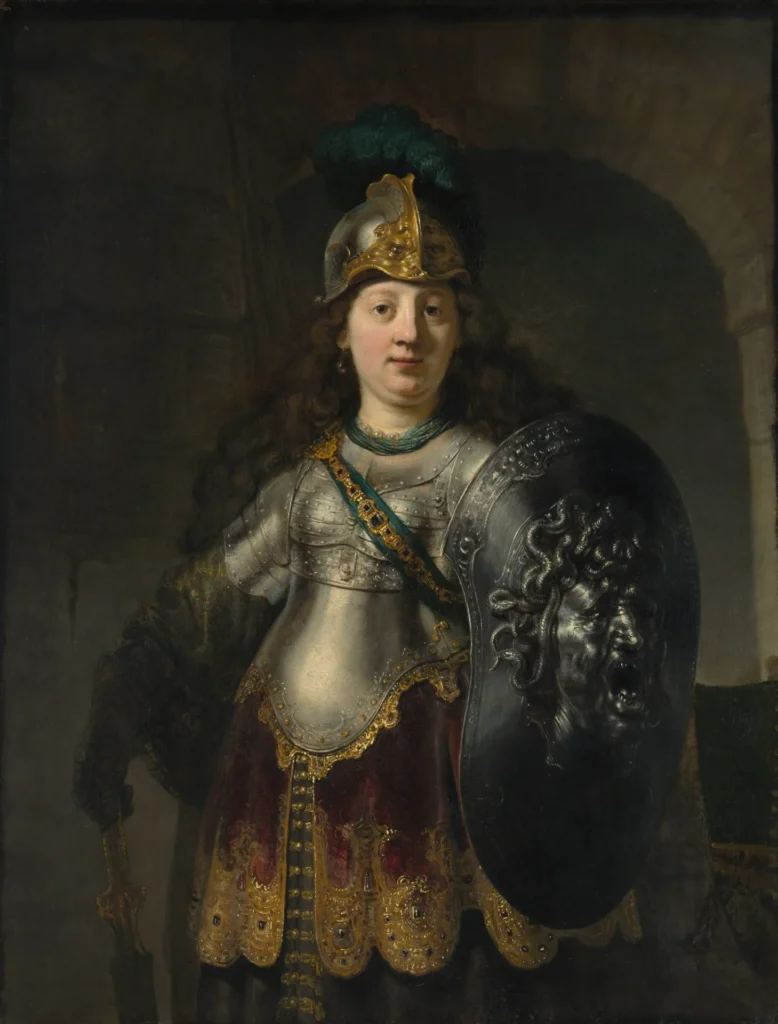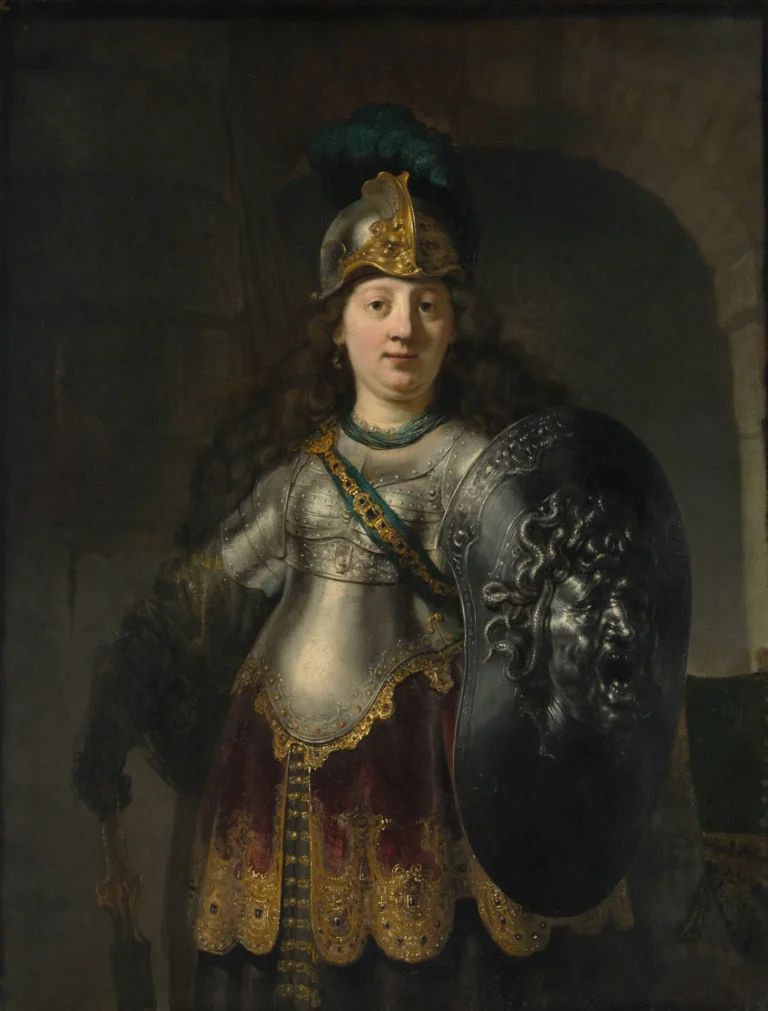Bellona
In Bellona, Rembrandt van Rijn presents the Roman goddess of war, encapsulating both power and symbolism central to the Dutch Republic in the 17th century. Created in 1633, this artwork captures the essence of Bellona with profound depth and intensity, reflecting the nation’s readiness to defend itself against threats. Through masterful manipulation of light and shadow, Rembrandt evokes a poignant expression that speaks to the viewer about the fierce spirit of war.
Year 1633
About the Artwork
The story behind Bellona becomes even more compelling when considering the backdrop of its creation in the early 17th century. At this juncture, the Dutch Republic was grappling with various external threats and had to assert its strength and sovereignty. By choosing Bellona as his subject, Rembrandt not only depicted a mythological figure but also channeled the national sentiment into his canvas. The painting exemplifies his early career, carving out a unique space for himself in the rich cultural milieu of Amsterdam, while the goddess' fierce demeanor resonates with the political climate of the era, urging the viewer to contemplate themes of power, resilience, and defense.
Did You Know
Liked what you see? Add it to your collection.
Enjoyed reading? Share it.
... continued
Subject
The painting depicts Bellona, the Roman goddess of war. This subject was likely chosen for its symbolic significance, particularly in the context of the Dutch Republic during that time.
Interpretation
The depiction of Bellona may have been intended to suggest the Dutch Republic's readiness to defend itself and repel threats. This interpretation aligns with the political climate of the Netherlands in the early 17th century.
Style
The painting is characterized by Rembrandt's sober and powerful style, which was a hallmark of his work during this period. Rembrandt's use of light, shadow, and expression adds depth and intensity to the figure of Bellona.
Historical Context
Created in 1633, this work reflects Rembrandt's early career, a period during which he was establishing himself as a prominent artist in Amsterdam.










